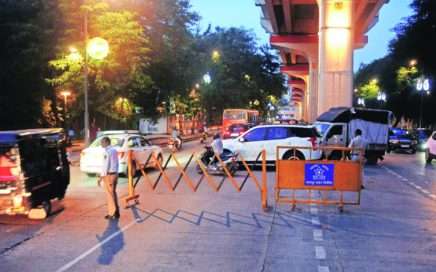
Nagpur: A recent response to a query filed under the Right to Information (RTI) Act has revealed that 63 buildings around Nagpur Airport continue to pose obstructions to the flight path, despite previous efforts to address the issue. Initially, 68 structures were identified as hurdles, but only five have been removed so far, leaving the remaining buildings as potential risks. These obstacles also interfere with communication signals between aircraft and Air Traffic Control (ATC), a key concern highlighted in the RTI response.
Nagpur-based RTI activist Abhay Kolarkar filed the query, seeking answers from the Airports Authority of India (AAI). However, the response was routed through MIHAN India Limited (MIL), the operator of the Nagpur Airport. According to MIL’s reply, the 68 hurdles were mapped out earlier, and the removal of five structures has been completed. Kolarkar had also inquired about the steps taken to notify building owners of the obstructions, to which MIL confirmed that 63 owners have yet to comply with removal orders.
Importantly, being marked as a hurdle does not necessarily mean the entire building must be demolished. Buildings are categorized into different zones based on their proximity to the airport, with specific height restrictions applied, particularly in the red zone. In some cases, only minor modifications, such as removing a water tank or an additional room that violates height regulations, are required to comply. However, if a whole floor exceeds the permitted height, it must be demolished.
The presence of these buildings, especially during an aircraft’s descent, can interrupt communication between the ATC and the plane, posing potential safety risks. As aircraft fly at a lower altitude during the landing process, maintaining clear and uninterrupted communication is essential. The obstructions caused by these buildings can lead to brief interruptions in this vital communication.
A senior official at MIL confirmed that the list of obstructing buildings has been forwarded to the Directorate General of Civil Aviation (DGCA) for further action.
Kolarkar had also raised several other questions regarding the number of builders who applied for a no-objection certificate (NOC), the clearances granted, and approvals for constructing buildings taller than 15 floors. However, MIL deferred these queries to AAI, stating that it falls under AAI’s jurisdiction. Despite Kolarkar addressing his original query to AAI, the response was redirected through MIL, creating confusion.
Furthermore, when Kolarkar sought details about the amount spent on airport maintenance, repairs, and management, MIL once again shifted responsibility to AAI, which provided a brief reply, simply stating “nil” in response to the question.
The RTI response has raised concerns about the ongoing risks posed by these buildings and the lack of clarity in jurisdictional responsibilities between MIL and AAI.














